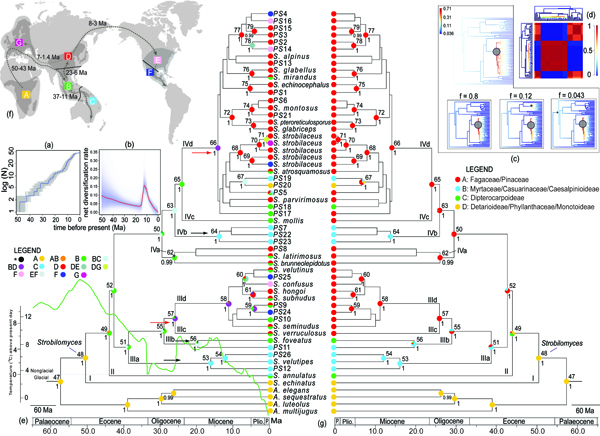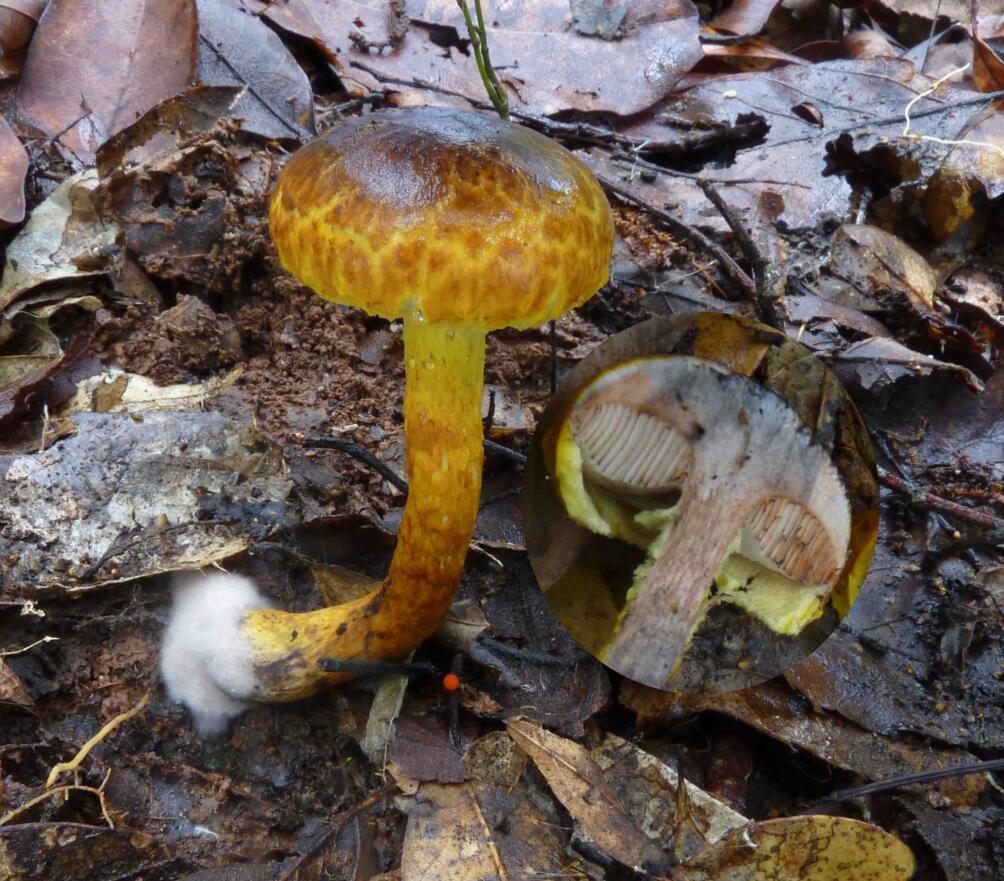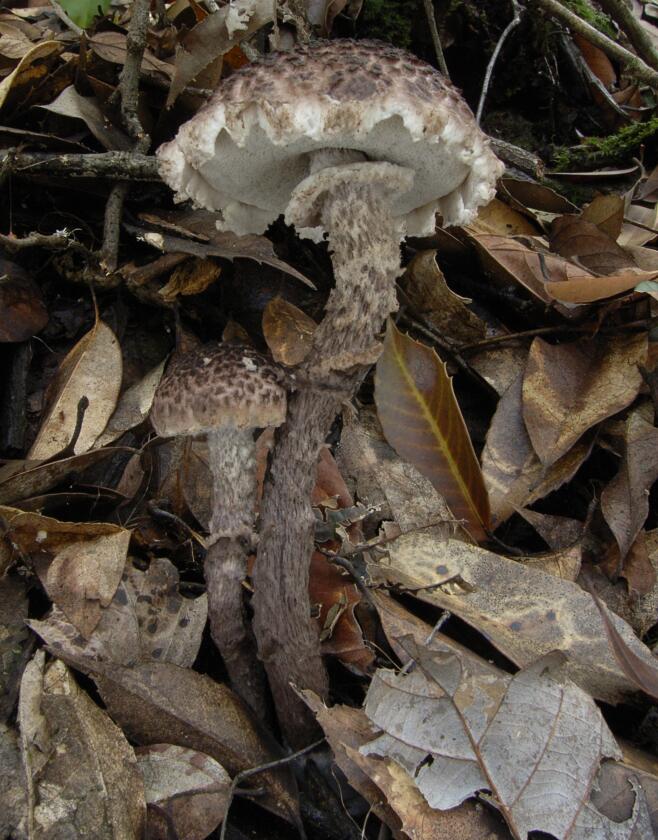To infer the distribution pattern of diverse organisms and the mechanisms which drive its formation is currently receiving much attention in evolutionary research. So far, a large number of biogeographical researches about plants and animals have been done. However, the study of historical biogeography of fungi, one of the most diverse biological groups on the planet, is still in its infancy. This is likely due to the lack of complete sampling, difficulties in species delimitation and very few records of fungal fossils.
Ectomycorrhizal (ECM) fungi, forming important associations with plants in evolution, have attracted much attention from scientists. Species of the genus Strobilomyces, known as "Old Men of the Woods", can form ECM symbioses selectively with plants of many families, e.g. Dipterocarpaceae, Fabaceae, Casuarinaceae, Myrtaceae, Pinaceae and Fagaceae in both tropical and temperate regions. Mushrooms of this genus are relatively easily recognizable in the field, and, thus, are ideal targets for the study of origin and evolution of ECM fungi.
Research group lead by Prof. YANG Zhuliang at Kunming Institute of Botany, Chinese Academy of Sciences (KIB/CAS) is focused on the taxonomy, systematics and evolution of macrofungi, and has recently conducted a study of the biogeography of Strobilomyces.
Based on four-gene markers, this study presents the first comprehensive phylogeny of Strobilomyces using extensive sampling from Africa, Asia, North/Central America and Australasia. It reveals 49 phylogenetic species, of which 18 are new, implying that the species diversity of Strobilomyces has been heavily underestimated.
An African origin in the early Eocene is inferred for Strobilomyces, and dispersal is likely to have played an important role for the current distribution of the genus. The “Boreotropical migration” hypothesis could explain the dispersal from Africa to Southeast Asia in the early Eocene.
The subsequent dispersal events from Southeast Asia to Australasia and East Asia were accompanied by two important continental collisions (Sundaland and Australia, Northern Borneo and Southern China).
Frequent historical biotic exchanges between East Asia and North America, and from mainland Asia to Japan, could explain the distribution patterns of Strobilomyces in the Northern Hemisphere.
The onset of one rapid radiation was possibly triggered by habitat contraction and drastic climatic fluctuation in the Oligocene and Miocene and then later expansion during the Miocene thermal optimum.
Meanwhile, host-shift events with respect to Fagaceae/Pinaceae might have provided ecological opportunities for this rapid diversification.
The research finding has been published in Journal of Biogeography entitled “African origin and global distribution patterns: Evidence inferred from phylogenetic and biogeographical analyses of ectomycorrhizal fungal genus Strobilomyces".
The work was financed by the Funds for International Cooperation and Exchange of the National Natural Science Foundation of China (Grant No. 31210103919), the Strategic Priority Research Program of the Chinese Academy of Sciences (Grant No. XDPB0201), the External Cooperation Program of the Bureau of International Cooperation, the Chinese Academy of Sciences (Grant No. 151853KYSB20170026), the National Science Foundation (USA) for funding (Grant No. DEB-9972018, DEB-9300798, DEB-1020421 and DEB-0414665), and the National Geographic Society Committee for Research and Exploration (Grant No. 7341-02 and 8457-08).

Figure 1: Chronogram of Strobilomyces. (a) LTT plots for 100 trees sampled from the 95% HPD trees and a consensus tree annotated from the BEAST analysis. (b) Plots of net diversification rates through time for lineages with 95% credible interval. (c) A phylorate plot for distinct net diversification rates by mapping colours to rates on all branches, and the 95% credible set of macroevolutionary shift configurations identified based on branch-specific marginal odds ratios. (d) Macroevolutionary cohort analysis with pairwise probabilities. (e) Ancestral area reconstruction with pie charts coloured by area based on DEC analysis. Black and red arrows represent dispersal events from Southeast Asia to Australasia and East Asia, respectively. The green curve represents global temperature change in the geological history according to Zachos et al. (2001). (f) The area division and inferred dispersal route of Strobilomyces. (g) Ancestral host reconstruction with pie charts coloured by host. (Image by KIB)

Figure 2: Strobilomyces (Image by KIB)

Figure 3: Strobilomyces (Image by KIB)
Contact:
YANG Mei
General Office
Kunming Institute of Botany, CAS
Email: yangmei@mail.kib.ac.cn







